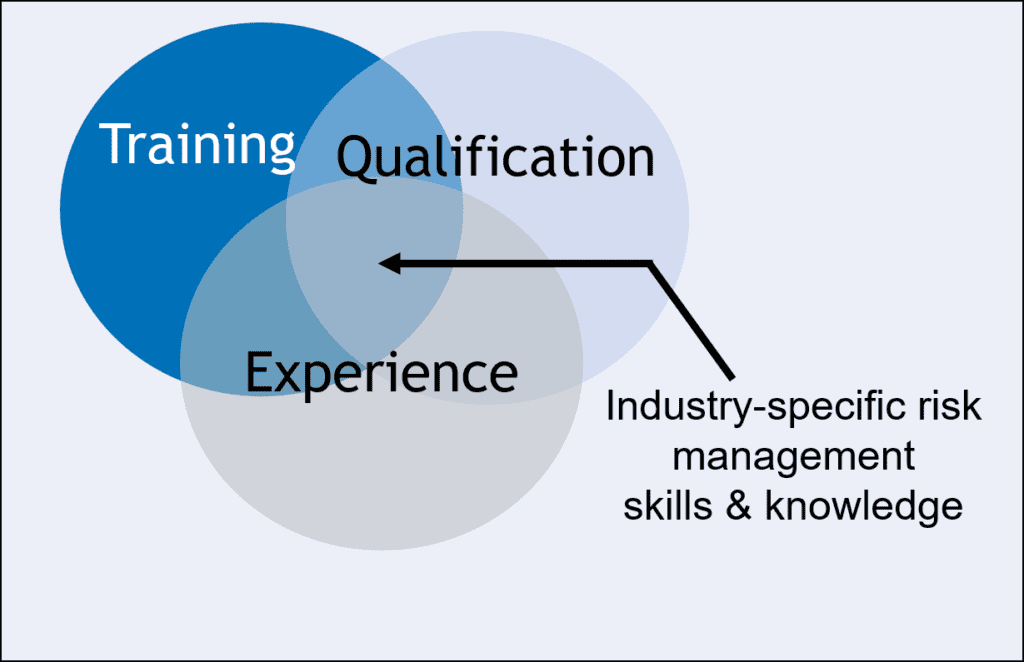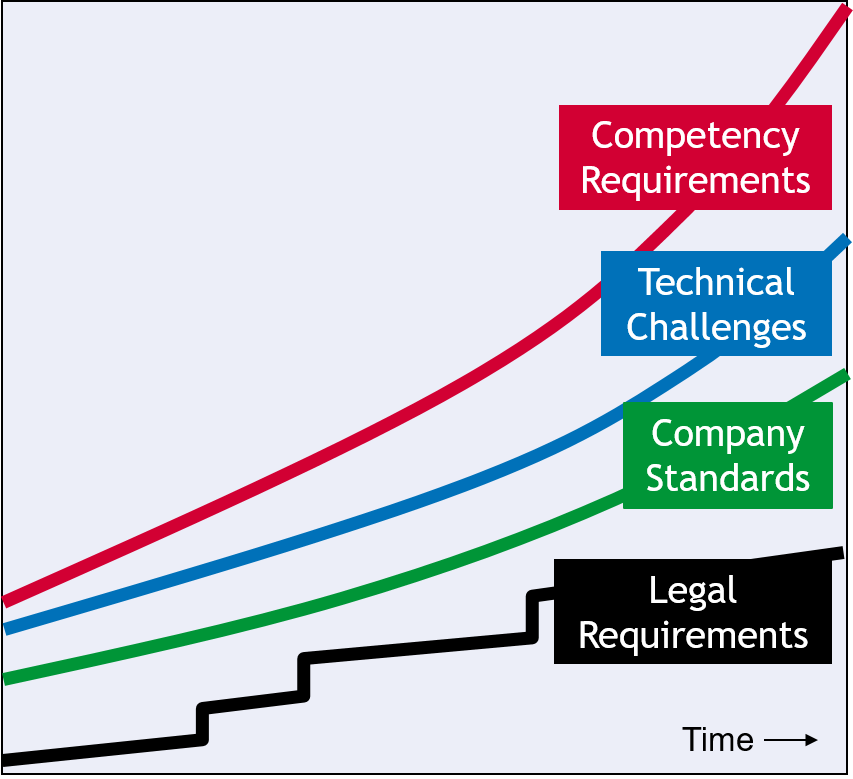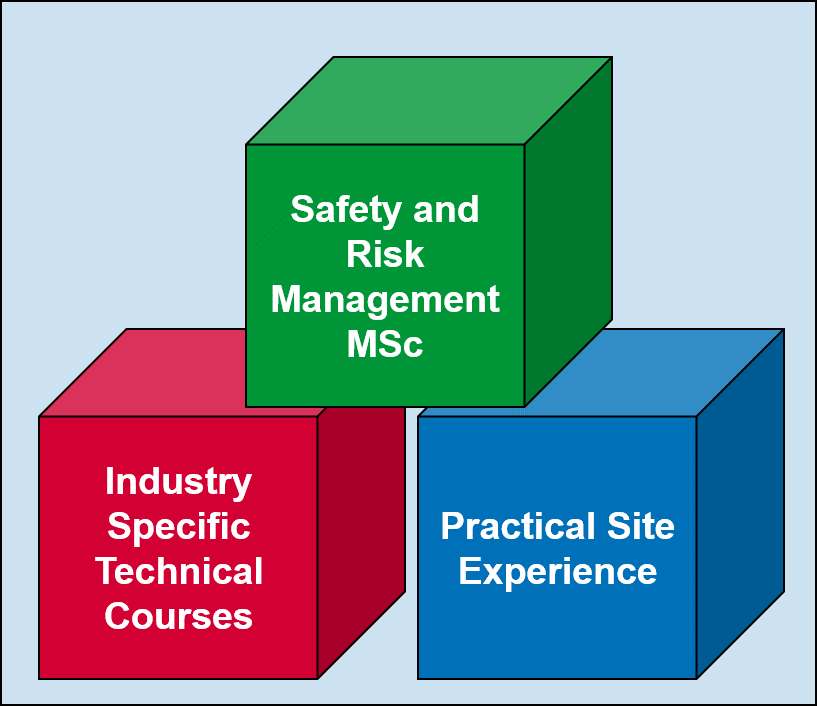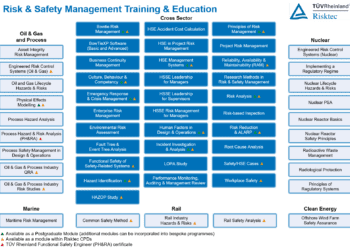Mind the gap – bridging the competence gap
In her recent speech [Ref 1] to the International Institute of Risk and Safety Management in London, the Chair of the UK Health and Safety Executive, Judith Hackitt CBE, acknowledged the role of Health, Safety and Environment (HSE) professionals and talked about the need to ensure that everyone is competent to play their part in assessing and managing risk.
The sentiment was echoed at a recent meeting of the UK’s Institute of Risk Management [Ref 2], which concluded that “whilst there is plenty of guidance and well developed tools and techniques for implementing good practice risk management systems, ultimately decisions are made by people. Consequently there is increasing interest in how we determine whether or not those individuals are competent to make those decisions. In particular we need to distinguish between being ‘competent’ and being ‘qualified’. Demonstrating competence should be more than just pointing to a certificate on the wall”.
WHAT IS THE COMPETENCE GAP?
A fully competent individual has gained knowledge and skills through a combination of training, qualification and experience. In the field of risk management, the knowledge and skills need to cover the specific industry sector as well as risk management theory and application of technical risk management techniques [Fig 1]

Figure 1 – Components of risk management competence
So a risk management professional may be proficient at applying risk management tools, but, through a lack of training or experience, may not have a good understanding of the industry within which he or she works.
Alternatively, an individual may have many years experience of working in the offshore oil and gas production industry for example, but, through a lack of training, may not understand fully a particular risk management concept.
Another example may be where an individual has a background in engineering design but has now moved into an operations role; they may be proficient at managing HSE risk through introducing hardware design changes but may not be confident or competent at reducing risk at a live operating facility involving procedures and people.
In all these cases, the competence gap arises when there is a mismatch between an individual’s knowledge and skills and the judgements they are required to make as part of their role.
Furthermore, increasing pressure is being placed on individuals to make the right decision at the right time. Increasingly complex legal requirements, coupled with higher company standards and new technology, means that demands on decision makers and risk managers have never been so stringent [Fig 2].

Figure 2 – Increasing requirement for competent decisions
Set all of this against the backdrop of a global skills shortage across the whole HSE profession in all hazardous industries, and it is clear there is a need to bridge the competence gap.
BRIDGING THE COMPETENCE GAP
An approach to risk management learning which delivers a competent professional combines the positive aspects of:
- Training, with practical experience of applying risk management techniques in the real-world
- Formal assessment of competence and qualification
- Understanding industry-specific technical issues
So how can these three pillars be integrated into a structured training programme that meets the business needs of an organisation? One approach is illustrated in Figure 3 and comprises three building blocks.
- A modular training programme providing a solid grounding in HSE risk management principles and techniques, with a good mix of lectures and practical hands-on exercises using real-world case studies relevant to the organisation’s industry and the individual’s role, combined with a formal assessment of competence and a Masters level qualification.
- Structured training courses to provide a foundation in the principles, technical issues, legal requirements and regulatory aspects of the industry.
- Targeted work experience at operational sites to provide an opportunity to put the training into practice, shadow experienced professionals in similar roles and interact with a range of industry personnel.

Figure 3 – Building blocks of a bespoke training programme
CONCLUSIONS
HSE risk management is relatively new compared to other professions and there is no ‘fast track’ way of bringing new professionals into the industry, unlike other mature professions. Those organisations that develop programmes delivering competent HSE risk management professionals are more likely to benefit from better risk-informed decisions than those organisations that simply recruit new personnel and hope they provide good advice.
An appropriate approach to bridging the competence gap is likely to comprise practical hands-on experience of risk management techniques; case studies which are based in the real-word; assessing competence and not just testing information recall; and understanding industry- and technology specific issues.
References
1. www.hse.gov.uk/aboutus/speeches/transcripts/ hackitt300609.htm
2. IRM North West, Risk Management Competence, 11-Oct-07, NWDA
This article first appeared in RISKworld Issue 16.







